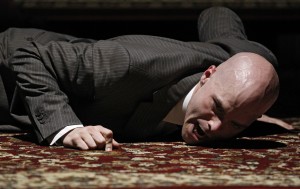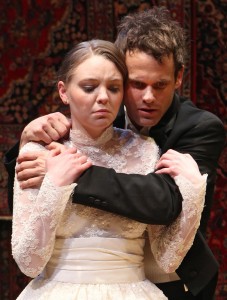The making of a successful musical comedy seems to require the following: A catchy title, a good mix of ballads, chorus numbers that lend themselves to snappy choreography, and some pop music, easily modifiable with hints of country, rock and a little blues thrown in for flavor. The story should be short and reduced to a few essentials, with just one or two easily overcome obstacles, and, of course, some heartfelt moments with hints at tragedy to give the piece heft. Honestly, Abe follows these instructions, and the result, I am happy to report, is utterly inoffensive. We follow young Abe Lincoln through several episodes of his formative teenage years, spent mostly reading, splitting logs (well, so we are told on many occasions, though not to worry: no logs are split here), in school learning spelling rules (a bit late at 17, but hairs shall not be split here either), and finally on his way to Indiana, where his father and stepmother move in search of better farming. All this and the death of his beloved sister in childbirth are told with lovingly choreographed song and dance numbers.
I cannot fault a young, enthusiastic cast of able singer/actor/dancers, the fluid direction (Joshua A. Kashinsky) nor the competent, sometimes even inspired choreography by Amy Klewitz. A handsome, suitably simple unit set by Joseph C. Heitman is nicely lit by Duane Pagano. So why, with so much good will and talent at hand, is the result so irritatingly saccharine, a most superficial portrait of a person who we would not take another look at if he were not named Abe Lincoln? Robert L. Hecker, who here signs for book, lyrics and music, has made it his business to pile cliché upon cliché; every song has a “dream”, “rainbow,” "hope" and “tomorrow” in it, words that should be banned from the (musical) stage for the next ten years.
There is a certain irony in the presentation of such an empty-headed piece of feel-good, anodyne theatre at a time when Lincoln’s party has perverted so much of what it stood for when he was at the helm. But never mind, Honestly, Abe springs right out of the naïve, innocent heart that makes America such an optimistic, positive country. Abe Lincoln is a trademark; the name will sell tickets, whether it is a grantor of anything worth considering or not. After all, who, in these harsh political times, cannot use some uplift.








